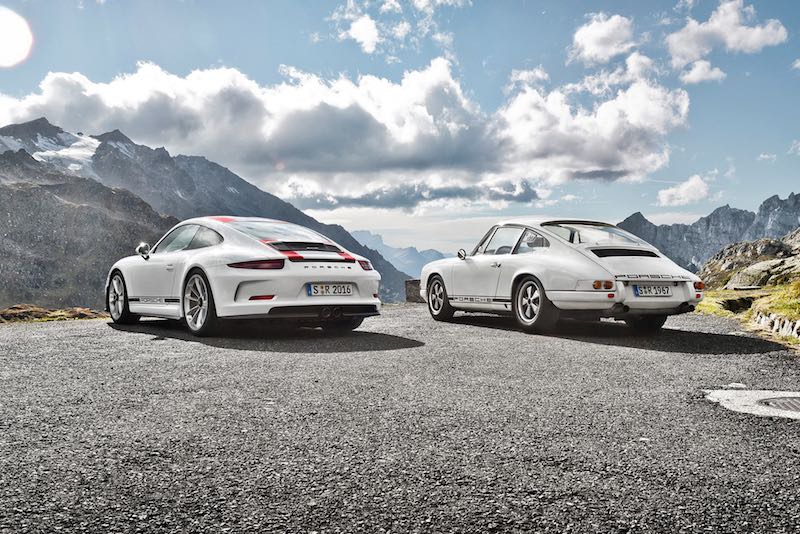With its new 911 R, Porsche unveiled a sports car in classical design at the 2016 Geneva International Motor Show. Its 500 hp four-litre naturally aspirated flat engine and six-speed sports transmission places the 911 R firmly in the tradition of its historic role model: a road-homologated racing car from 1967.
Produced as part of a limited production series, the 911 R (R for Racing) performed in rallies, in the Targa Florio and in world record runs. Like its legendary predecessor, the new 911 R relies on systematic lightweight construction, maximum performance and an unfiltered driving experience: this special limited-edition model of 991 units has an overall weight of 1,370 kilograms (3,020 lbs.) and is currently the lightest version of the 911. With the high-revving six-cylinder naturally aspirated engine and manual sports transmission, Porsche is once again displaying its commitment to especially emotional high-performance sports cars. Developed in the motorsport workshop, the 911 R extends the spectrum of high-performance naturally aspirated engines alongside the motor racing models 911 GT3 and 911 GT3 RS.
No Subscription? You’re missing out
Get immediate ad-free access to all our premium content.
Get Started



